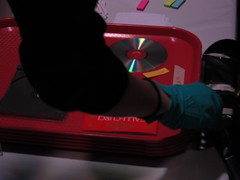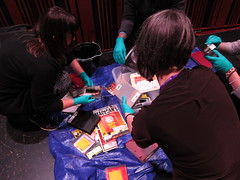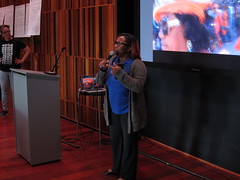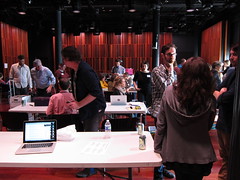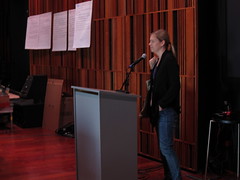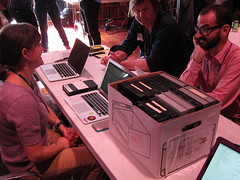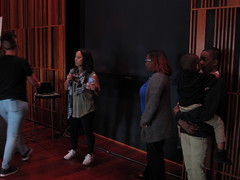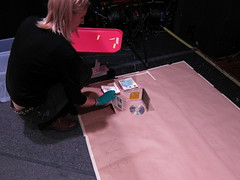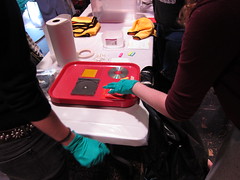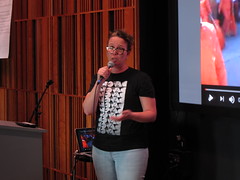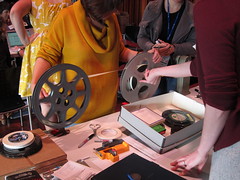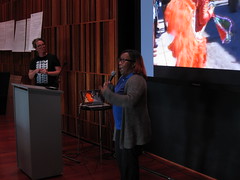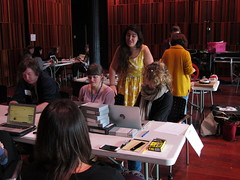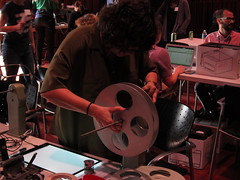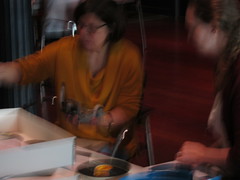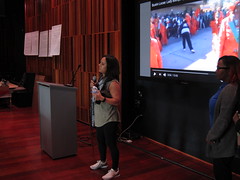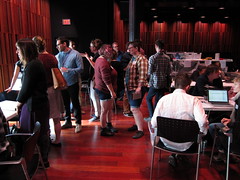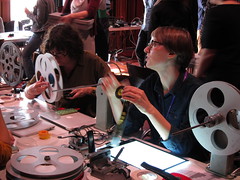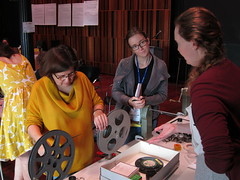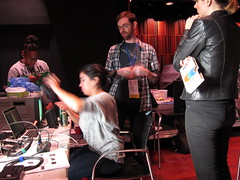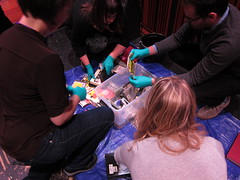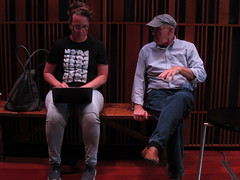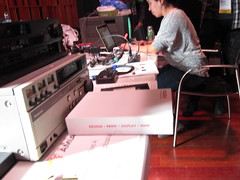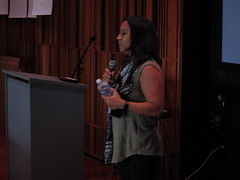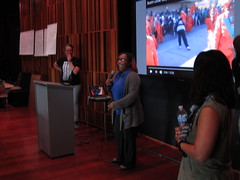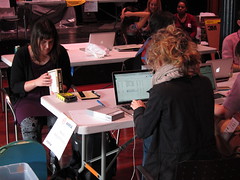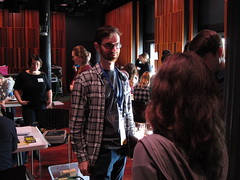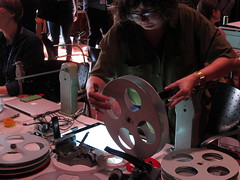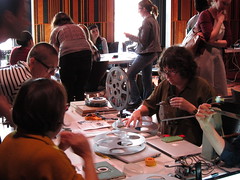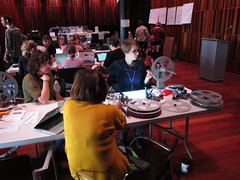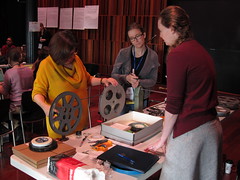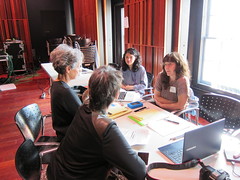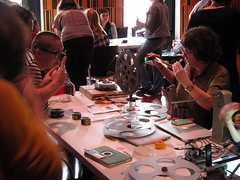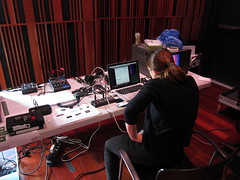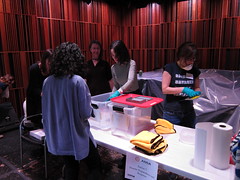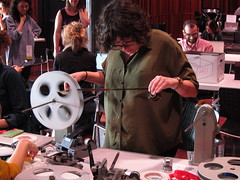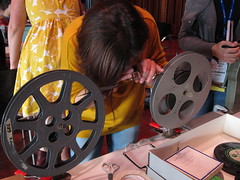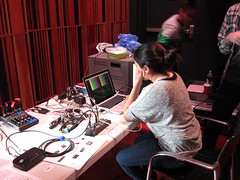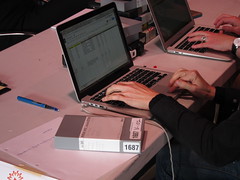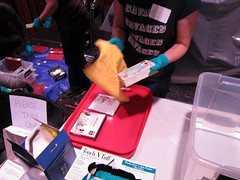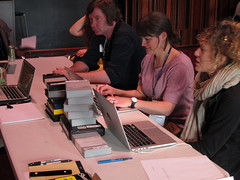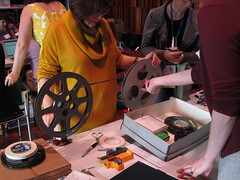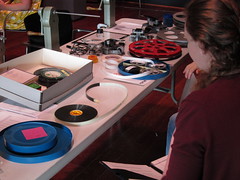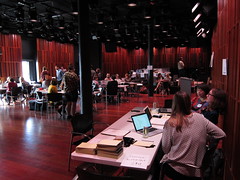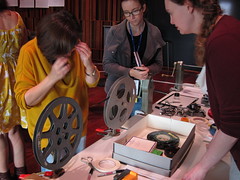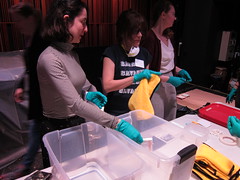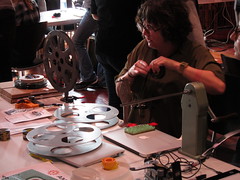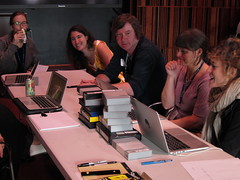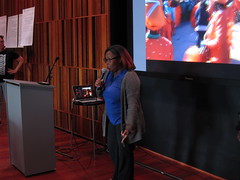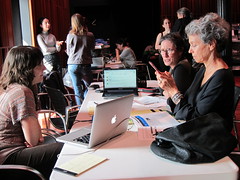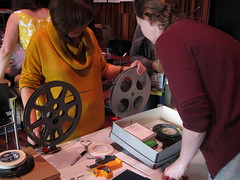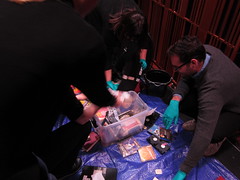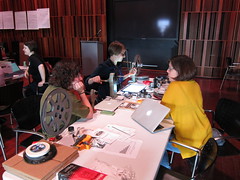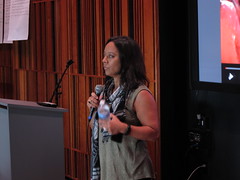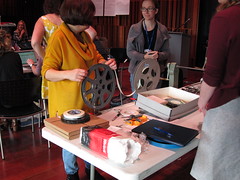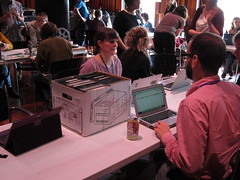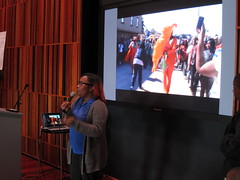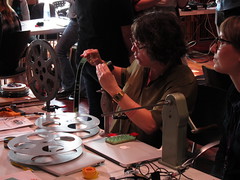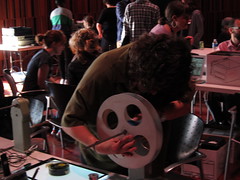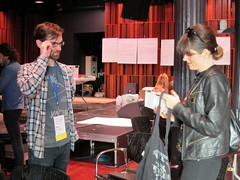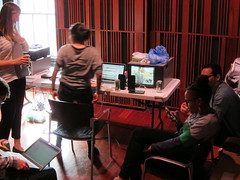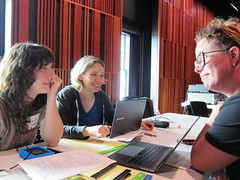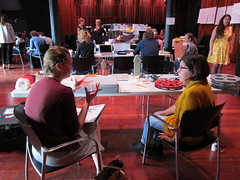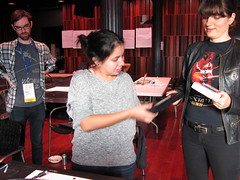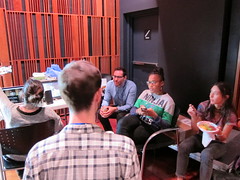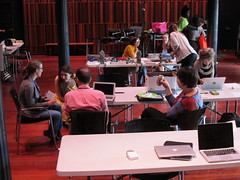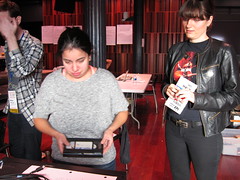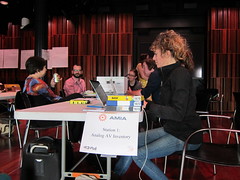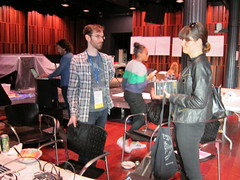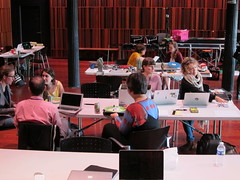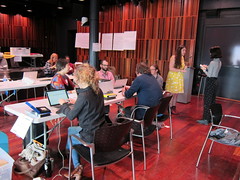Table of Contents
November 29, 2017, Community AV Archiving Fair in cooperation with NOVAC, Old Mint, 400 Esplanade Avenue, New Orleans, LA
The annual meeting of the Association of Moving Image Archivists (www.amiaconference.com) was in New Orleans November 29-December 2 and, as a part of this, AMIA members joined forces with the New Orleans Video Access Center (NOVAC) for an all-day Community AV Archiving Fair. Aimed at helping local individuals and organizations improve their audiovisual archiving skills, the Community AV Archiving Fair invited independent media makers, collecting institutions, and community groups in the New Orleans area to bring their challenges, their media objects, and their data for a day of collaborative problem solving and training in collaboration with the AMIA community.
The fair was organized around a number of “stations,” staffed by AMIA volunteers, and focused on a particular workflow, technique, or tool. Below is a list of stations and their descriptions:
Station 1: Analog AV Inventory
- Lead: Kelli Hix and Moriah Ulinskas
- Format: Lecture + hands-on, small group (~20-30 min)
- Description: AMIA volunteers will provide a hands-on demonstration on how to identify common magnetic media and film formats (as needed), then show attendees how to create a simple inventory template using Google Sheets / Excel / Google Forms which provides essential data about the collection for use in collection planning and advocacy.
- Intended audience: Archivists / Artists with an unprocessed av collection; those looking to improve organization and physical order of their collections; those looking to establish a cataloging workflow; those looking to gather data about their collections for advocacy or grant-funding.
- Bring with you: Attendees are encouraged to bring sample items (5-25) from their collection to test and inventory, laptops for cataloging, and are encouraged to bring in any existing inventory strategies for discussion and review.
Station 2: Film Inspection
- Lead: Amy Sloper
- Format: One-on-one or small group demo and discussion (~20 min)
- Description: Attendees will learn how to determine basic information about a film without having to watch it, and will learn how to answer questions such as: Does it have sound? Is it color or b/w? What is the title? How do you read date codes?, etc. Depending on the needs of each attendee, station volunteers will go into greater detail and provide recommendations on equipment, and/or provide hands-on training on topics such as how to add leader and how to splice film.
- Intended audience: Anyone with film that would like to learn more about inspection and handling
- Bring with you: Nothing required, but attendees are encouraged to bring a small selection of films (1-2) to be inspected
Station 3: Prioritizing/Preparing Media for Digitization
- Lead: Marie Lascu
- Format: Small group (max 10 people) discussion (~20-30 min)
- Description: Attendees will learn considerations for prioritizing media for digitization, and methods for preparing media for digitization. We will discuss assessing the value of media based on personal or organization needs, with the ultimate goal of establishing concrete prioritization tiers. We will also discuss manageable preparation work for physical media (film + video), including basic storage concerns and long term planning. Digitization is not a quick fix or “one and done” process. Preparation and prioritization will help in managing time, resources, and expectations.
- Intended audience: Filmmakers, personal archivists, curious individuals – anyone embarking on a smaller-scale media digitization project for the first time (and with minimal resources).
- Bring with you: Nothing required
Station 4: Video Digitization
- Lead: Pamela Vizner
- Format: Small group (5 persons max) hand-on demonstrations (~20 min)
- Description: Attendees will learn about a basic digitization setup for analog video which can be implemented at low-cost, and about minimum equipment needed to perform good quality video digitization in house and will get acquainted with signal paths, connectors and video digitization workflows. Each demo session covers:
1. Video and audio signal paths
2. Wiring diagrams for audio and video
3. Common cables and connectors
4. Minimum equipment for good quality digitization
5. Discussion on target formats
6. Digitization software
7. Additional useful tools (if there’s enough time) - Intended audience: People from small/community orgs with video collections and reduced budget
- Bring with you: Nothing required, but attendees can bring VHS tapes to be transferred
Station 5: File Storage and Management
- Lead: Lauren Sorensen
- Format: One-on-one or small group discussion
- Description: Attendees are invited to come with their questions about digitization of moving image materials, workflow techniques, and recommendations as well as tips for storing files safely and checking for integrity over the long term. Questions about digital storage, file organization and file naming will also be able to be addressed, depending on attendees’ needs.
- Intended audience: Filmmakers and archives without digital preservation skillsets
- Bring with you: Bring questions first and foremost about digital preservation, storage, digitization and so on, especially about video materials but broader questions work too. Laptops and sample files are welcome too.
Station 6: Tools and Resources Q&A
- Lead: Kathryn Gronsbell and Trisha Lendo (in person and as Twitter moderators)
- Format: Online, in-person one-on-one, and small group discussion (~5-10 min each)
- Description: The station will provide AMIA volunteers to offer “reference” support for matching attendee needs with freely available tools or resources. An attendee can stop by or tweet a question to the designated hashtag #AskAnAVArchivist, give a quick overview of a particular pain point, and the AMIA rep will provide a “match” of possible tools or resources which can help the attendee address the issue. We’ll also recommend related panels/presentations happening at AMIA.
- Intended audience: Anyone with a question for the AMIA community
- Bring with you: Challenges and questions
Station 7: Disaster Preparedness and Response
- Lead: Kara Van Malssen
- Format: Small group hands-on demonstration (~30 min)
- Description: The aim of this session is to introduce attendees to approaches for how to mitigate disasters, how to be prepared when disaster strikes, how to respond in an emergency, and how to assess and salvage damaged audiovisual items. Attendees will be invited to practice cleaning, drying, and documenting various “damaged” media.
- Intended audience: Attendees interested in learning more about disaster preparedness and recovery, and sharing their strategies
- Bring with you: Sample media (video, audio, film, disc, etc.) that you don’t mind potentially sacrificing!
Station 8: Archiving the Deb Cotton Collection
- Lead: Sandra Yates and Pamela Vadakan
- Format: Full day workshop (~6 hours)
- Description: The Deb Cotton Collection station is a problem-solving station that seeks to empower community members to preserve and provide access to the digital video files of videographer, Deb Cotton. The station will use freely available tools and platforms that will allow community members to access, search, and curate the collection. Deb Cotton described herself as a “publisher, writer, videographer, covering all things New Orleans.” Through her writings and videos, she extensively documented the culture of New Orleans second line parades, a tradition that descended from the jazz funeral. The Deb Cotton Collection contains a YouTube channel and hard drive of digital video files created by Deb Cotton and needs to be more accessible to the New Orleans community. The Deb Cotton Collection station will provide hands-on instruction to upload files to a special collection on the Internet Archive; will provide basic descriptive metadata and guidelines; will fine-tune procedures that will help complete the project beyond the AV Fair; and will produce an instruction manual for further work on the collection as well as a catalog listing of all videos.
- Intended audience: Culture Bearers, New Orleans community members associated with Deb Cotton and Second-Line, Tech-minded problem-solvers
- Bring with you: Attendees are encouraged to bring laptops (if possible), and knowledge of the history of the collection
Station 9: How to Start a Community Archive Workshop
- Lead: Mona Jimenez
- Format: One-on-one or small group discussion
- Description: The goal of Community Archiving Workshops (CAW) is to help an organization jump-start the preservation of an audiovisual collection—film, video, or audio. The idea is simple: experienced audiovisual archivists partner with local volunteers for a daylong workshop that will assess and catalog as many materials as possible, and in the process, provide hands-on training for local volunteers, so they can carry on the work in the future. With proper planning, these workshops are not only extremely valuable to your community’s organization—they are also a lot of fun. This station will introduce you to the CAW Handbook ( http://communityarchiving.org/) and other available resources that will help you start a workshop of your own.
- Intended audience: Archivists and community organizations interested in preserving audiovisual collection materials and organizing a workshop in their community.
- Bring with you: Questions and interest in planning a community archiving workshop
Documentation
Gallery Images
